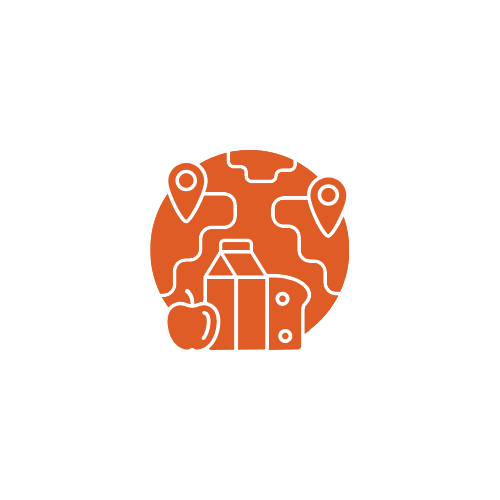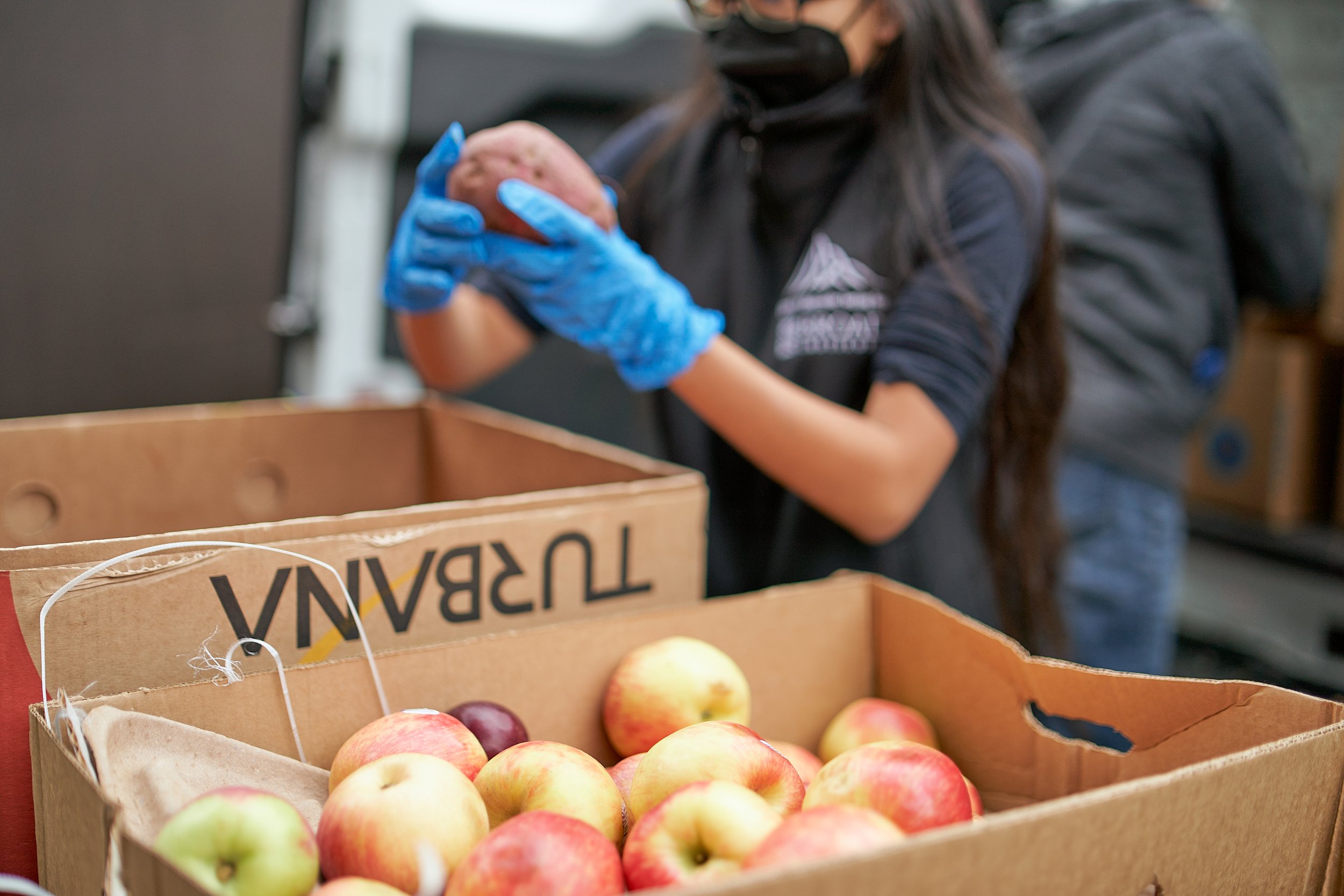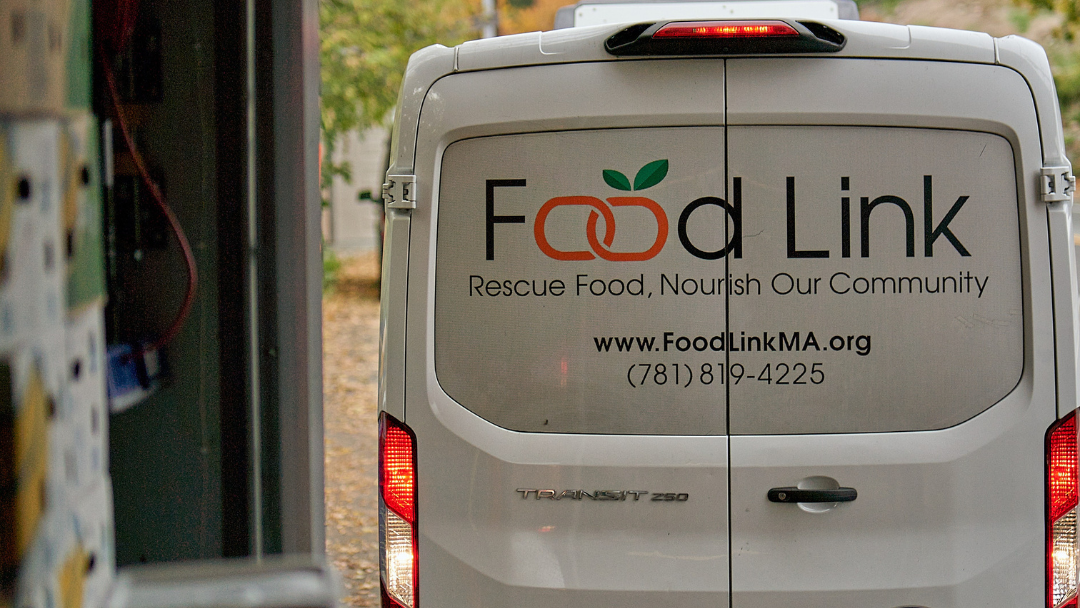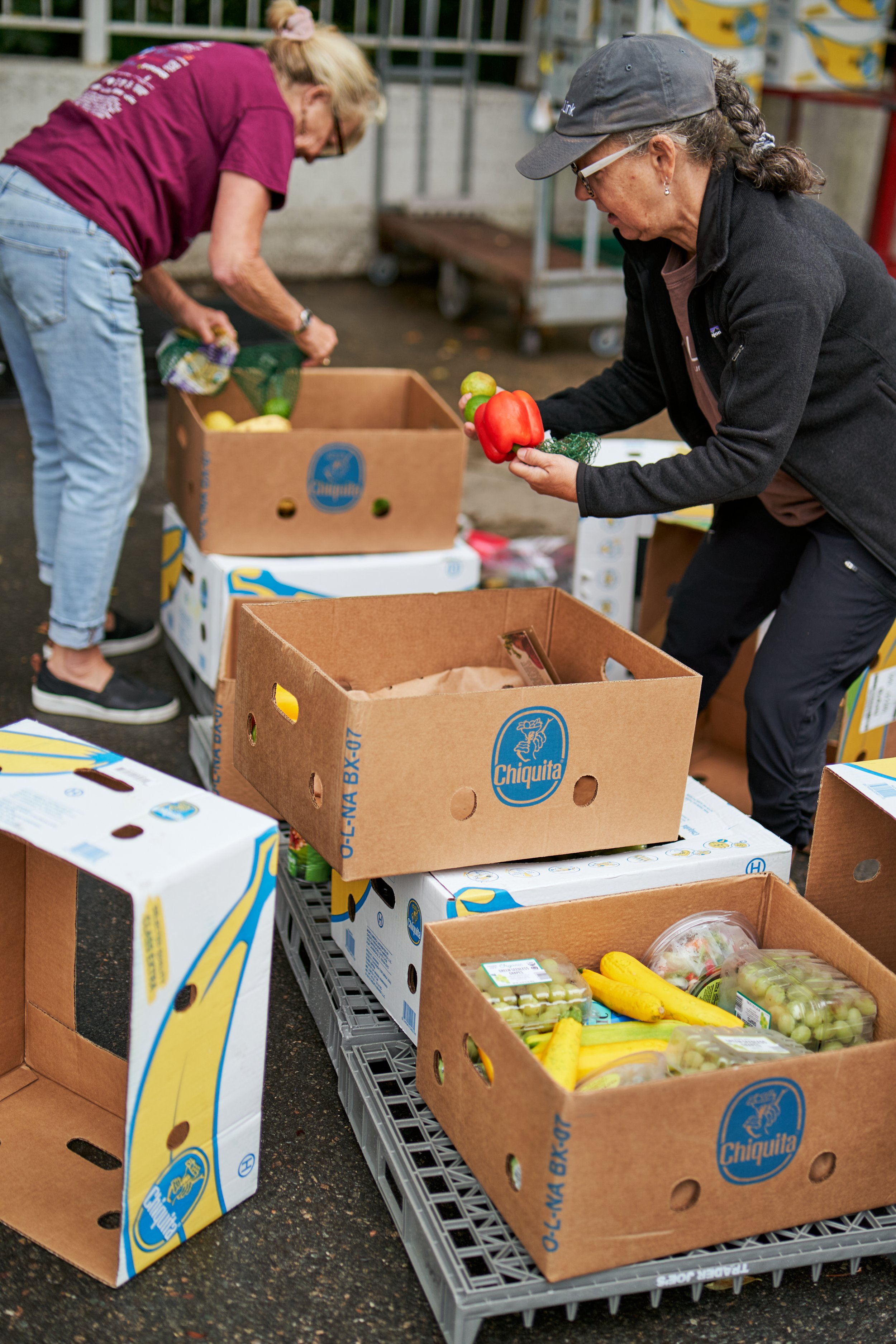
Over our first decade, Food Link became a vital part of the regional food security system, bridging the gap between distributors with excess food and individuals experiencing food insecurity.
Eager to amplify our impact, we engaged in a strategic planning process to guide Food Link’s future. Our updated mission reflects our role in this system and our commitment to infusing food justice into all aspects of our work.
Mission
Food Link is working to create a more equitable food system throughout Greater Boston by rescuing and distributing high-quality, customized food to under-resourced communities and by advocating for systems change.
Vision
Food Link envisions a world in which everyone has abundant nourishing food and a food system in which no edible food goes to waste.
Core Values
Through our work, we build relationships, respond nimbly to opportunities, and prioritize the choice and autonomy of recipient agencies and their clients, thereby centering dignity for all.
Tag Line
Rescue Food, Nourish Our Community.

The strategic plan is organized around three core pillars that guide our work. Read more about these in our FAQ.

Dignity and choice

Volunteer program

Systems-level change
We defined seven outcome areas to guide our investments and activities.

Infuse food justice into all aspects of our work.

Strengthen our food rescue model to explicitly prioritize choice, autonomy, and dignity.

Strengthen the volunteer program so it can continue to be the backbone of our work.

Begin building our systems-change program.

Build a robust staff to lead our next chapter.

Plan for long-term financial sustainability through a strategic funding approach.

Optimize the board’s composition and committee structures.
Please join us in embarking on this next chapter of Food Link’s journey.
We invite you to subscribe to our newsletter, fill out our volunteer interest form, or make a gift to support our program.

Frequently Asked Questions
-
Yes, Food Link’s core program is staying the same. Our staff and volunteers continue to rescue surplus foods that would otherwise go to waste – with an emphasis on fresh, nourishing perishables – and create customized deliveries that meet our recipients’ dietary and cultural needs.
Although Food Link’s core program isn’t changing, our new mission allows for discernment in the food we receive and in our partnerships. With food insecurity growing due to record-high inflation, now is a critical time for Food Link to consider our best role within the broader food security ecosystem. -
Our plan focuses on three primary impact areas. The first two are an organic evolution of our program. The third pillar is an extension of our mission.
1) The first emphasizes dignity and choice within our core food rescue program. We aim to accomplish this by improving feedback loops with our recipients, proactively sourcing foods that are of high value (e.g. proteins, produce, dairy), providing what people facing food insecurity need, and building a database to improve partnership building and program efficiency.
2) The second is strengthening our volunteer program, through which we empower hundreds of people within the community to be ambassadors for food security. We have already introduced improvements to our volunteer recruitment and training processes, and will continue to do so throughout the year.
3) The third is investing in systems-level change by framing our work through an equity lens and identifying ways we can help move the needle on broader food justice issues. This includes providing access to nourishing food with dignity through our core food rescue program, amplifying the voices of those facing disparities in food access, and participating in local advocacy work with regional food security coalitions. -
Food justice, a movement that launched in the 1960s as part of the civil rights movement, involves addressing disparities in food access, particularly for communities of color and low-income communities, and examining the structural inequities at the heart of our food system. Food Link has always woven elements of food justice into our program. Now, we have clarified our mission to highlight the centrality of food justice to how we do our work.
Both nationally and regionally, there is a growing recognition that food insecurity requires systems-level solutions. Taking on a food justice lens is necessary to realize our vision of everyone having access to abundant, nourishing food.
Learn about food justice from BU.Read more about food justice's history from the Aspen Institute.
-
Food rescue alone will not solve food insecurity. Food Link believes that change at the food system level is an essential part of the solution. In this first year of implementation, we will adopt a learning agenda to define how Food Link can engage in systems-level work. This includes advocating for policy changes around hunger, collaborating with others already working on these issues to build more sustainable solutions to hunger, and amplifying the voices of those we serve so that their needs are better met by the emergency food system.
-
Throughout the strategic planning process, staff and board grappled with the question of how Food Link can have the greatest impact in the communities we serve. Thanks to feedback from numerous internal and external stakeholders, we have reframed how we think about impact. Our focus has shifted from defining impact primarily in terms of volume (i.e. rescuing more pounds of food and bringing on more partners) to deepening community relationships and enhancing our versatility to meet the unique needs of our small-to-medium sized recipient agencies.
-
Food Link continues to care deeply about environmental sustainability and the food waste crisis in this country. That is why we remain committed to tackling food insecurity through the strategy of food rescue.
While environmental considerations are part of our decision making process, our main priority is to feed people who are experiencing food insecurity in a way that promotes dignity and choice. This may mean making tradeoffs about how we spend our time and resources. For instance, we may decide to put a truck on the road to rescue an extra pallet of high-value foods that we know our recipients would want. We may also decline to collect some foods that do not meet the needs of our recipients, even if this means they may not be composted as a result.
Articulating the relative priority of our food security mission vs. our desire for environmental impact gives us the clarity we need to make these sorts of decisions. Food Link also maintains relationships with local farm feed and composting services, chooses sustainable packaging, and considers the ecosystem effects of our work on a broad scale. -
Food Link has always been powered by volunteers, and that is not changing. Our 250+ regular volunteers continue to play an integral role in our food rescue operations, including but not limited to picking up food, sorting for quality and packing customized boxes for distribution, as well as new opportunities still being defined.
-
Food Link staff and board members have already started this work. This plan will guide Food Link for the next five years, with a detailed implementation timeline that spans three years.
If you have read this entire page and are still interested in more, a complete copy of our 22-page strategic plan can be shared upon request by emailing info@foodlinkma.org



